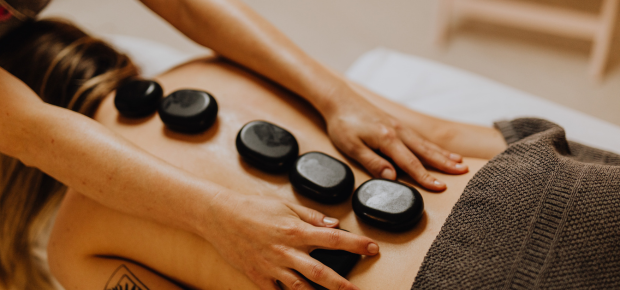
Tibetan massage is more than just a physical treatment. It forms part of an ancient medical system that sees health as the balance of body, mind and spirit.
Deeply rooted in Tibetan medicine, or Sowa Rigpa, it draws from Indian Ayurveda, Chinese medicine and the local healing traditions of the Himalayas. What sets it apart is how deeply it integrates energy flow, physical care and spiritual awareness.
The basics of Tibetan massage
The primary massage technique is known as Kunye, which translates to "ointment rub" or massage. It’s one of six external therapies described in the Gyud-Zhi, the classic Tibetan medical text. The main focus of Kunye is to rebalance the wind element, or Lung, which governs movement, mental activity and the nervous system.
Kunye massage can include:
-
Acupressure techniques
-
Deep circular kneading
-
Gentle stroking and rubbing
-
Use of warm oils such as olive or sesame
-
Breathwork and energy assessment
-
Chanting or mantras for spiritual grounding
The methods often feel similar to shiatsu, reflexology or remedial massage, but with a unique focus on subtle energy and emotional balance.
How a Tibetan massage session works
Sessions often start with a quick check of your energy levels. The therapist might begin with a simple breathing practice, and then tie red threads around your ring fingers and fourth toes. This step is believed to protect the balance of your five elements and ward off negative energies.
Massage begins at the head and gradually works down:
-
Oils are gently applied to the scalp and face
-
The therapist massages the neck and shoulders using rhythmic strokes
-
The arms, hands and back follow, working through any tension
-
Finally, the hips, legs and feet are massaged with pressure suited to your needs
Afterwards, a warm towel is used to remove excess oil and help eliminate toxins. The aim is not just to relax you but to help restore harmony between mind and body.
This treatment is typically safe for everyone—including children, pregnant people and the elderly—when done by a trained practitioner.
Conditions Tibetan massage may support
Tibetan massage is traditionally used to ease issues related to disturbances in the wind element, such as:
-
Tension headaches
-
Irregular menstruation or cramps
-
Mild heart palpitations
-
Digestive sluggishness or constipation
-
Sciatic nerve discomfort
-
Post-injury muscle tightness
People often report:
-
Better quality sleep
-
Enhanced appetite and digestion
-
A more balanced emotional state
-
Increased energy throughout the day
-
A calmer mind and relaxed body
If you’re curious about other ways to support your wellbeing, take a look at our guide on exploring new massage techniques.
What is Tibetan fire massage?
Also known as Mebum, Tibetan fire massage is different from Kunye. It uses heat and suction to stimulate blood flow and clear stagnant energy in the body.
Here’s what usually happens:
-
Cups are heated with a flame to create a vacuum inside
-
They are quickly applied to the skin, typically on the back or shoulders
-
The suction gently lifts the skin, drawing fresh blood to the area
-
Cups may stay still or be moved around for a massage-like effect
This method is often used to relieve:
-
Muscle soreness or stiffness
-
Poor circulation or lymphatic stagnation
-
Inflammation and swelling
-
General stress and toxin build-up
It’s best performed by a trained expert and may not suit people with skin sensitivities or certain health conditions.
Tibetan medicine explained simply
Tibetan medicine is based on three core energies:
-
Lung (wind): linked to movement, breathing and thought
-
Tripa (bile): related to digestion, heat and metabolism
-
Beken (phlegm): governs bodily structure and stability
When these energies fall out of balance, health issues can arise. Tibetan healing doesn’t just look at the body—it also considers emotional, mental and environmental influences.
Typical diagnostic methods include:
-
Analysing your pulse and urine
-
Observing your physical features
-
Asking about your lifestyle and emotions
Treatment might involve:
-
Herbal remedies
-
Massage therapies
-
Breathing techniques and meditation
-
Diet and lifestyle changes
-
Spiritual rituals and guidance
It’s a well-rounded, preventative form of care where everything is connected.
Comparing Tibetan massage and fire massage
| Feature | Tibetan Massage (Kunye) | Tibetan Fire Massage (Mebum) |
|---|---|---|
| Technique | Massage with oils and hand strokes | Heated cups to create suction |
| Main goal | Relaxation and wind balance | Detoxification and circulation boost |
| Tools used | Natural oils and hands | Fire, cups and heat source |
| Who it suits | Most people, including kids and elderly | Must be used cautiously with sensitive skin or conditions |
Where it all began
The roots of Tibetan massage go back thousands of years. It evolved with:
-
The teachings of Tibetan Buddhism
-
Ayurvedic practices from India
-
Traditional Chinese Medicine
-
Indigenous Tibetan and Himalayan healing systems
Monks and lay healers used massage not only for healing, but also to prepare the body for meditation. Today, Tibetan massage is growing in popularity across Australia thanks to natural therapists integrating it into their holistic offerings.
Is it safe for everyone?
Tibetan massage is gentle and usually safe, but as always, it’s a good idea to:
-
Get the all-clear from your doctor, especially if you have a medical condition
-
Share any concerns or sensitivities with your therapist upfront
-
Make sure your therapist is properly trained, insured and listed with a relevant professional body
Wrapping it up
Tibetan massage is more than a body treatment. It’s a mindful, spiritual, and physical experience rolled into one. Whether you’re looking to ease tension, find calm, or simply try something different, it offers a beautifully balanced approach to health.
You can search for a qualified Tibetan massage therapist near you on Natural Therapy Pages to explore it for yourself.


